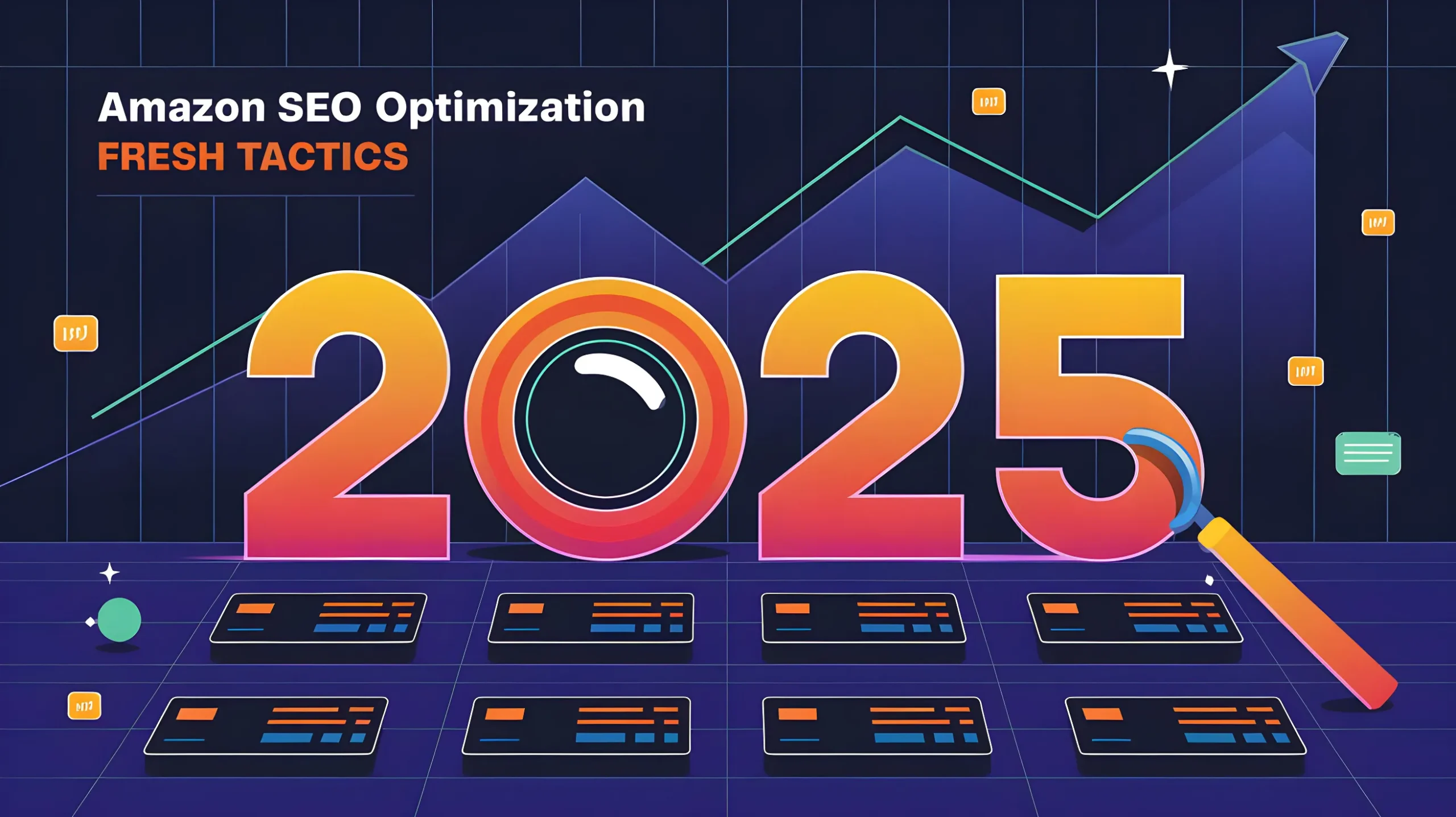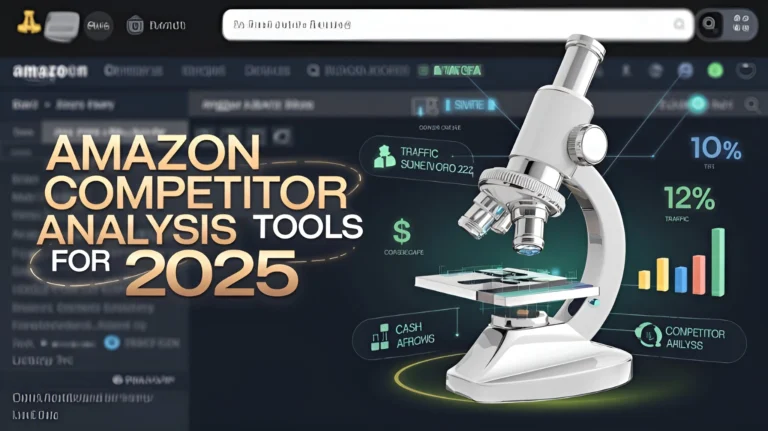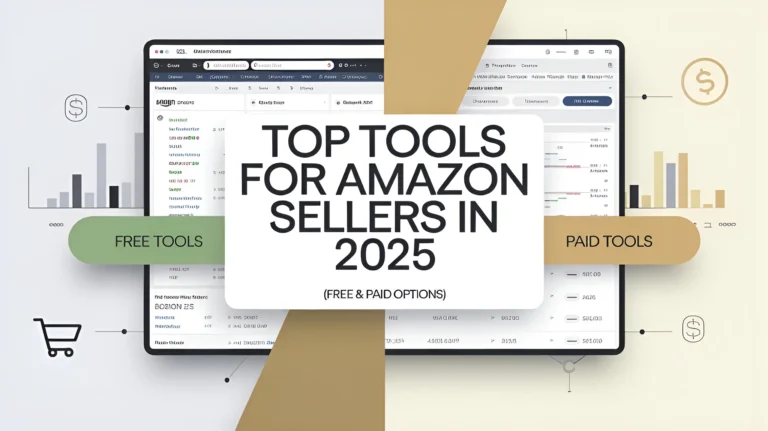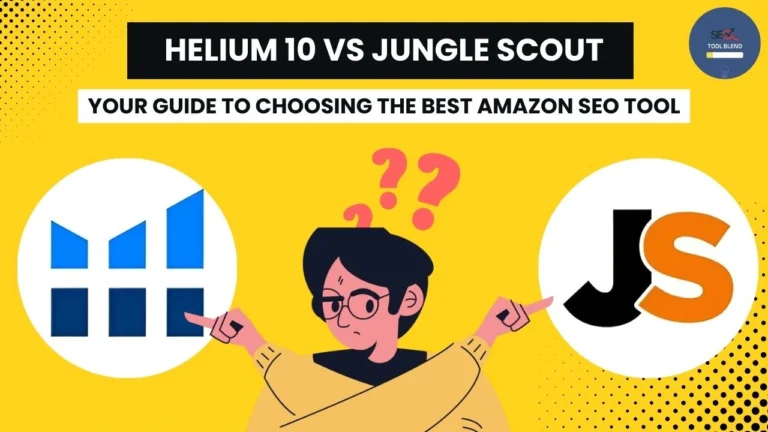If you’re selling on Amazon, you’ve probably noticed things are changing fast. By 2025, the platform will reward sellers who adapt to new trends—and leave behind those stuck in outdated strategies. Amazon SEO optimization isn’t just about keywords anymore. It’s about understanding AI, voice search, and how today’s shoppers make decisions. Let’s break down why you need to act now.
Table of Contents
2025’s Algorithm Shifts (AI, Voice Search, Video Prioritization)
Amazon’s algorithm is getting smarter every year. Here’s what’s changing and how it affects your listings:
- AI-Powered Rankings
Amazon’s AI now analyzes everything—from how long shoppers hover over your listing to what they click next. For example:- If customers open your listing but leave quickly, Amazon assumes your product isn’t relevant.
- Fix It: Add a FAQ section to keep visitors engaged. Answer questions like, “Does this fit a 10-inch tablet?” upfront.
- Voice Search Explosion
Over 50% of shoppers now use voice commands like:- “Alexa, find a waterproof Bluetooth speaker under $50.”
- Optimize For Voice: Use long-tail keywords that mimic how people talk, like “best budget wireless earbuds for running.”
- Video Content = King
Listings with videos get 3x more clicks than those without. Amazon’s algorithm prioritizes videos because they:- Reduce returns (shoppers know exactly what they’re buying).
- Boost engagement (viewers spend 2x longer on your page).
- Pro Tip: Add a 30-second demo video showing your product in action.
Rising Competition + Evolving Buyer Behavior
The Amazon marketplace is more crowded than ever. Here’s what you’re up against:
- 2.5 Million Active Sellers: If your Amazon SEO optimization isn’t sharp, you’ll drown in the noise.
- Shoppers Are Impatient: 73% of buyers won’t scroll past page one. To survive, you need:
- Eye-Catching Titles: “2025’s Best-Selling Stainless Steel Water Bottle – Leak-Proof, 24-Hour Cold” works better than “Water Bottle – Blue.”
- Instant Answers: Use bullet points to address concerns like, “Will this fit in my car’s cup holder?”
Amazon’s 2025 Algorithm: Key Changes You Can’t Ignore
Let’s dive deeper into the three biggest shifts and how to adapt.


Amazon AI-Powered Product Ranking (Tools + Competitor Analysis)
Amazon’s AI now acts like a picky shopper. It rewards listings that:
- Match Search Intent: If someone searches for “durable hiking backpack,” the AI checks if your product title, bullets, and reviews mention “durable” or “waterproof.”
- Keep Shoppers Engaged: Use tools like Helium 10’s Cerebro to spy on competitors’ keywords. For example:
- If rivals rank for “lightweight camping gear,” add that phrase to your backend keywords.
Action Steps:
- Install Jungle Scout’s Keyword Scout to find gaps in your keyword strategy.
- Run a “session depth” audit: Are visitors clicking other products after viewing yours? Improve your images and Q&A section.
Voice Search Optimization (Natural Language + Long-Tail Keywords)
Voice search isn’t just for Alexa anymore. Shoppers use it to:
- Compare prices (“What’s the cheapest air fryer with 5-star reviews?”).
- Find specific features (“Organic cotton baby onesies with snap buttons”).

How to Optimize:
- Use Full Sentences: Instead of “blender 500W,” target “best quiet blender for smoothies under $100.”
- Add a “Questions” Section: Anticipate voice queries like:
- “Is this compatible with iPhone 15?”
- “How long does shipping take?”
Example:
A seller of reusable straws saw a 40% traffic boost after adding keywords like “eco-friendly metal straws for iced coffee” to their title.
Video Content’s Role in Engagement + Conversions
Videos are no longer optional. Here’s how to use them:
- Demo Videos: Show your product solving a problem. Example: “How to fold this travel crib in 60 seconds.”
- Customer Testimonials: Film real users saying, “This yoga mat stopped my back pain!”
- Behind-the-Scenes: Build trust by showing your factory or team.
Pro Tip: Use Amazon’s A+ Content tool to add videos directly to your listing. Sellers using A+ Content see up to 10% higher sales.
Step-by-Step Amazon SEO Optimization for 2025
Forget generic keywords like “running shoes.” In 2025, specificity wins.
Tools to Try:
- Helium 10’s Magnet: Finds long-tail keywords (e.g., “wide-width women’s running shoes for flat feet”).
- Jungle Scout’s Opportunity Score: Identifies low-competition niches.
| Tool Name | Price | Free Plan | Easy to Use |
|---|---|---|---|
| Helium 10 | $97/month | Limited free plan | Yes |
| Jungle Scout | $49/month | No | Yes |
| AMZScout | $29/month | Free trial only | Yes |
Step-by-Step Process:
- Brainstorm: List 10 problems your product solves (e.g., “stainless steel lunch box that doesn’t leak”).
- Plug Into Tools: Find search volume and competition for each phrase.
- Prioritize: Choose 5-7 keywords with high searches and low rivalry.
Listing Optimization: Titles, Bullets, Backend Secrets
Your listing is your salesperson. Make it persuasive!
Title Formula:
[Brand] + [Product] + [Key Feature] + [Benefit].
Example:
- “FreshBake Silicone Baking Mats – Non-Stick, Reusable, Dishwasher Safe”
Bullet Points That Sell:
- Focus on pain points: “Tired of cookies sticking to the pan? Our non-stick mats guarantee perfect results every time.”
- Use symbols: “ 100% Money-Back Guarantee | FDA-Approved Materials”
Backend Keywords:
Stuff hidden terms like “gifts for bakers” or “eco-friendly kitchenware” here. Amazon gives you 250 characters—use them all!
Syncing SEO + PPC for Maximum Visibility
SEO and PPC are power partners. Here’s how to make them work together:
- Run Auto Campaigns: Let Amazon’s algorithm find cheap, high-converting keywords for you.
- Reinvest Profits: Use PPC data to update your organic keywords. For example, if “organic cotton sheets king size” converts well in ads, add it to your title.
- Bid on Your Brand: Protect your brand name from competitors by bidding on it.
Advanced Amazon SEO Optimization Tactics for 2025
Ready to outsmart competitors? Try these pro strategies.
Hyper-Localized Listings (Regional Trends + Language Nuances)
Sell in multiple regions? Tailor your listings:
- Weather-Based Keywords: “Waterproof hiking boots for rainy climates” in Seattle listings.
- Local Slang: Use “soda” in New York and “pop” in Chicago.
- Holiday Trends: Target “last-minute Christmas gifts” in December.
Example:
A seller of snow shovels boosted sales by 25% after adding “heavy-duty snow shovel for Midwest winters” to their Illinois listings.
Dynamic Pricing’s Impact on Rankings
Amazon’s algorithm tracks price changes and rewards competitive pricing. Tools like RepricerExpress adjust your prices in real-time without slashing profits.
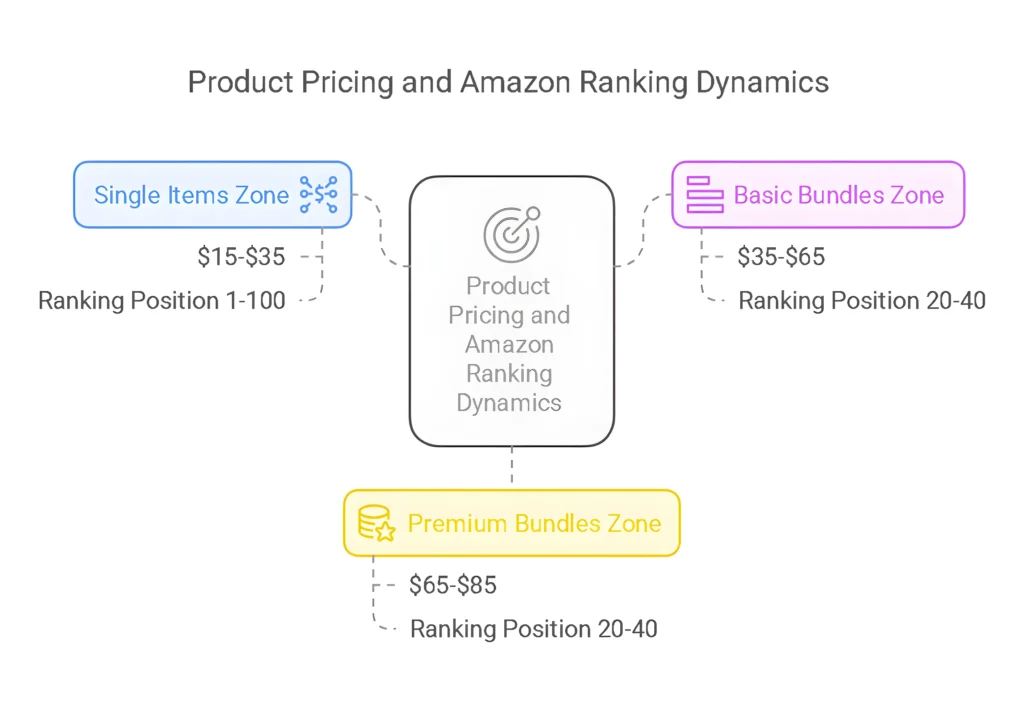
Golden Rule: Never race to the bottom. Instead:
- Stay within 5% of the Buy Box price.
- Offer bundles (e.g., “Buy 2, Get 10% Off”) to justify higher prices.
Review Optimization Without Breaking Guidelines
Reviews are Amazon SEO gold. Get more without breaking rules:
- Include a Insert Card: Write “Love your purchase? Let others know!” on a thank-you card inside the package.
- Respond to Negativity: Apologize publicly and offer a solution. Example: “We’re sorry your item arrived damaged! We’ll send a replacement ASAP.”
Pro Tip: Amazon’s algorithm weighs recent reviews most heavily. Encourage feedback monthly.
Future-Proofing Your Amazon SEO Optimization Strategy
2026 Predictions (AR, Sustainability Metrics)
- AR Previews: Shoppers will “try” products virtually. Start testing 360-degree product images now.
- Eco-Labels: Tags like “Climate Pledge Friendly” will boost visibility. Add keywords like “sustainable packaging” to your listings.
Action Step: Audit your supply chain for sustainability. Even small changes (e.g., recyclable packaging) can future-proof your brand.
Monthly Audits + A/B Testing for Long-Term Success
Audit Checklist:
- Are your keywords still relevant?
- Do images/videos reflect current trends?
- Are prices competitive?
A/B Testing Ideas:
- Test two titles: “2025’s Best-Selling Yoga Mat” vs. “Eco-Friendly Non-Slip Yoga Mat.”
- Run videos vs. no videos for 2 weeks.
Amazon SEO Optimization FAQ (2025 Edition)
What’s the #1 Ranking Factor in 2025?
Conversion rate + session depth. Amazon wants listings that turn browsers into buyers. Improve yours by:
- Adding a comparison chart (“Why Our Blender Beats the Competition”).
- Using high-quality images that answer questions upfront.
How Does Amazon’s Algorithm Work Now?
It’s a mix of AI, customer behavior, and content quality. Listings that clearly answer shopper questions (via bullets, videos, or Q&A) rank higher.
Best Tools for Keyword Research?
- Helium 10: For spying on competitors’ keywords.
- Jungle Scout: Finds low-competition niches fast.
- SEMrush: Tracks Amazon + Google trends together.

